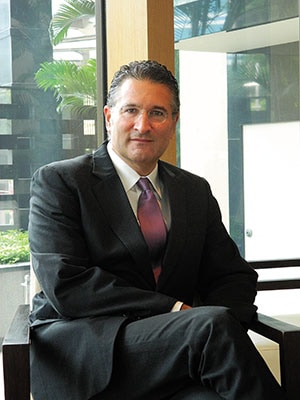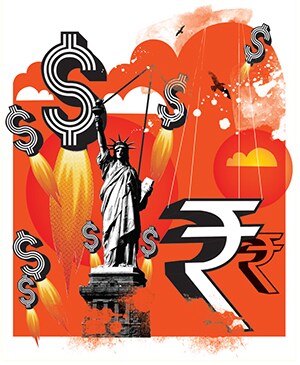
The Almighty Dollar and the Fallen Rupee
RBS’s Drew Brick explains why the dollar is holding up even though US growth isn’t something to write home about—and the impact on India if the Fed goes slow on its money printing operations
“I am not an economist. I am an old bond trader,” said Drew Brick, who leads the Market Strategy desk for RBS in the Asia-Pacific region, when Forbes India caught up with him for breakfast on a recent visit to India. “We trade the noise,” he added emphatically.
Right now, the noise is about what US Fed Chairman Ben Bernanke said or didn’t say about his bond-buying. And this is why one needed to know what the “old bond trader” had to say about why the rupee was falling against the dollar. “What is happening now is really not a function of anything really specific to India, although India has an inclination to have problems,” explained Brick. Finance Minister P Chidambaram should welcome at least the first part of his statement, since he has been defending the “fundamentals” of the economy to anybody who would listen.
The foreign exchange market hasn’t been one of them, for it has been cocking a more attentive ear to what Bernanke had to say. And on June 19, he said that the Fed would go slow on its money printing operations in the days to come as the US economy started reviving. “If the incoming data are broadly consistent with this forecast...it would be appropriate to moderate the monthly pace of purchases later this year...And if the subsequent data remain broadly aligned with our current expectations for the economy, we would continue to reduce the pace of purchases in measured steps through the first half of next year, ending purchases around mid-year,” Bernanke said at a press conference that followed the meeting of the Federal Open Market Committee (FOMC).
That statement impacted the bond markets most—and the carry trade. The carry trade is about investors who borrow in low-yield currencies to invest in assets in other markets, presumably with higher yields. Bernanke’s statement signalled that bond yields may go up, and that meant carry-trades would have to be unwound. Brick confirmed this: “We are seeing the unwinding of a lot of carry trades that have been taking place across the globe in the chase for yield.”
Brick, who bears a striking resemblance to Hollywood actor Richard Gere, had worked with BNP Paribas, Morgan Stanley and legendary bond kings Pimco before he joined RBS last year. He explained why the dollar is holding up even though US growth isn’t exactly something to write home about. “Some people think that the United States is the least dirty shirt in the drawer. And it has got growth, though not a very high trajectory of growth,” said Brick.
It is this minor revival that is creating problems for carry trade investors who have borrowed and invested money across the world on the assumption that US interest rates will rule close to zero in the foreseeable future.
The return of economic growth in the US has pushed up 10-year treasury bond yields. The yield, which stood at 1.63 percent in the beginning of May, has since risen to 2.5-2.6 percent.







